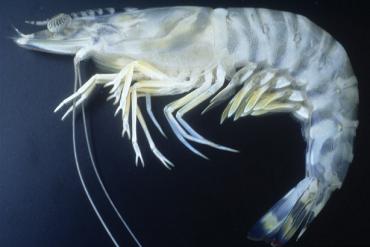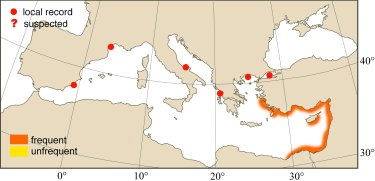
|
Relevant Synonyms
Misidentification
|
|
| photo: Bella Galil |
|
SHORT
DESCRIPTION
color :
body pale, bearing uninterrupted brown transverse bands. Walking legs and pleopods pale yellow proximally, blue distally. Uropods distally striped with yellow and blue, setal fringe red.
common size :
TL 17 cm males, 27 cm females (max.). |
DISTINGUISHING CHARACTERISTICS
BIOLOGY / ECOLOGY
habitat : |
|
1st
MEDITERRANEAN RECORD
|

|
|
DISTRIBUTION
|
ESTABLISHMENT SUCCESS
speculated reasons for success :
|
|
|
MODE OF
INTRODUCTION |
IMPORTANCE TO
HUMANS |
|
KEY
REFERENCES
|
|
|
 Penaeus japonicus Monod, 1930
Penaeus japonicus Monod, 1930